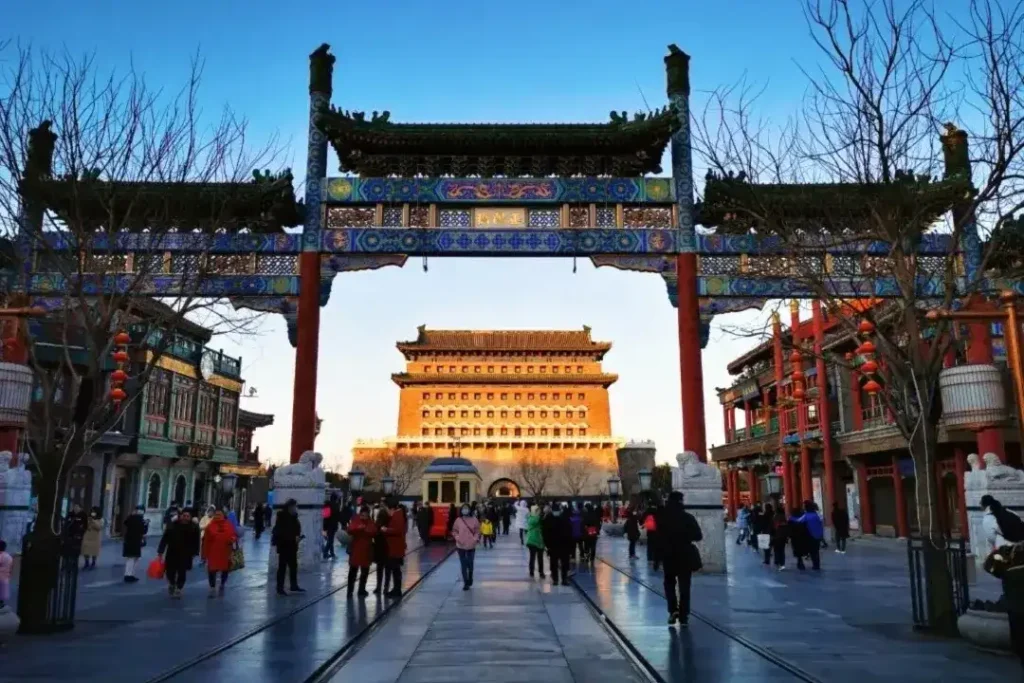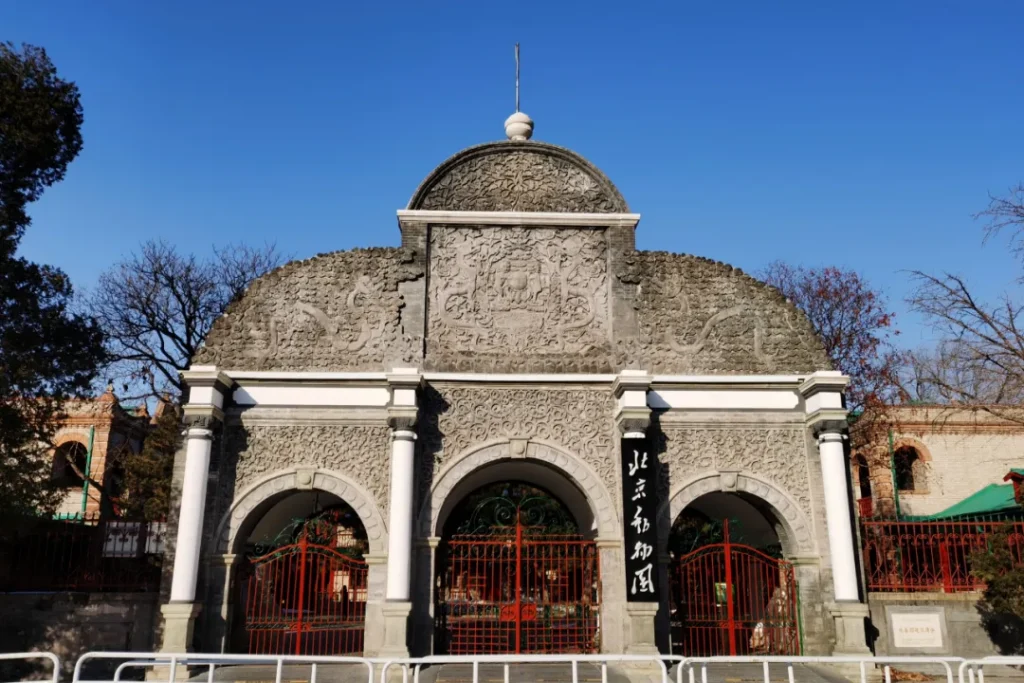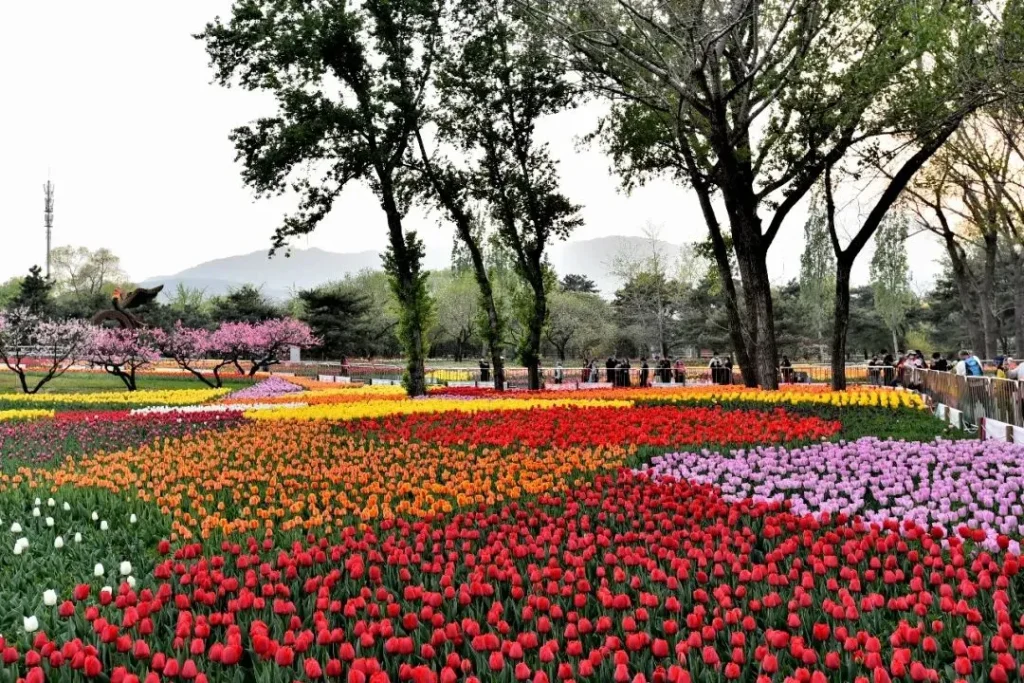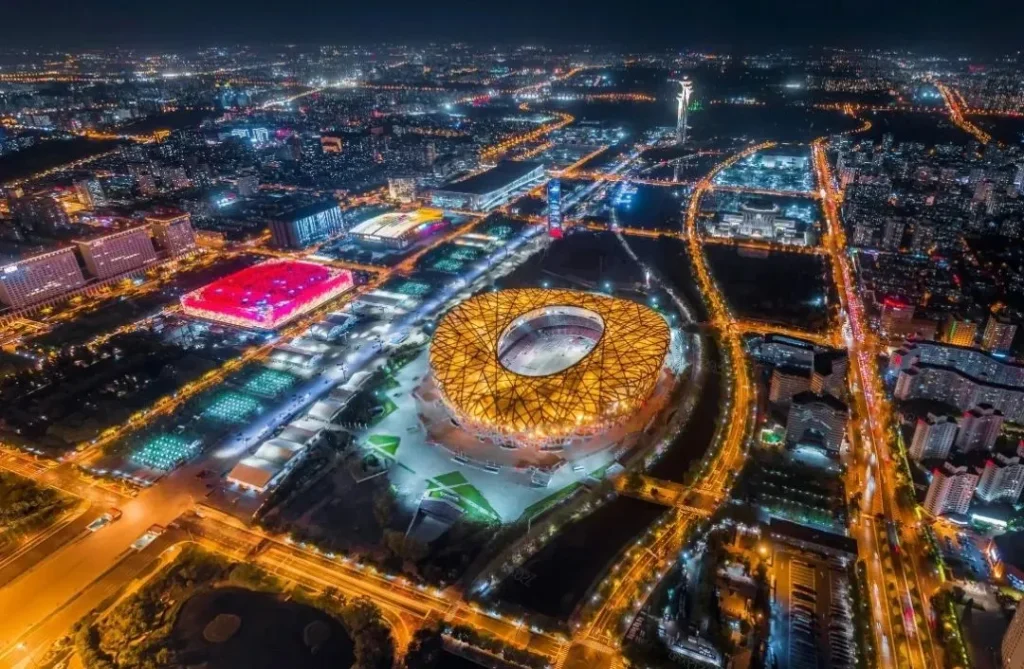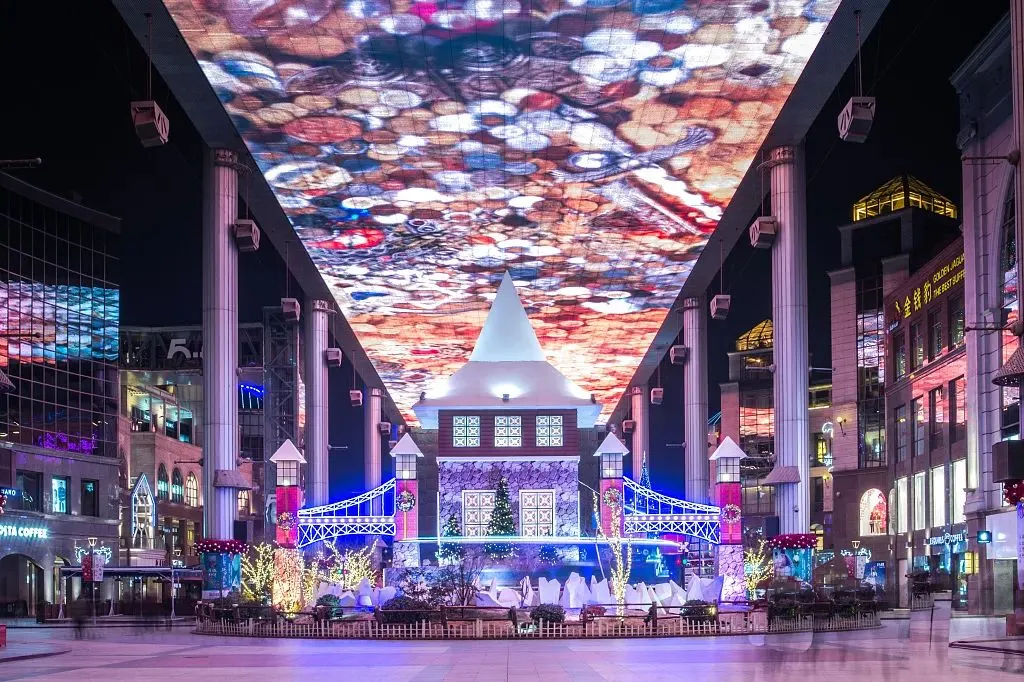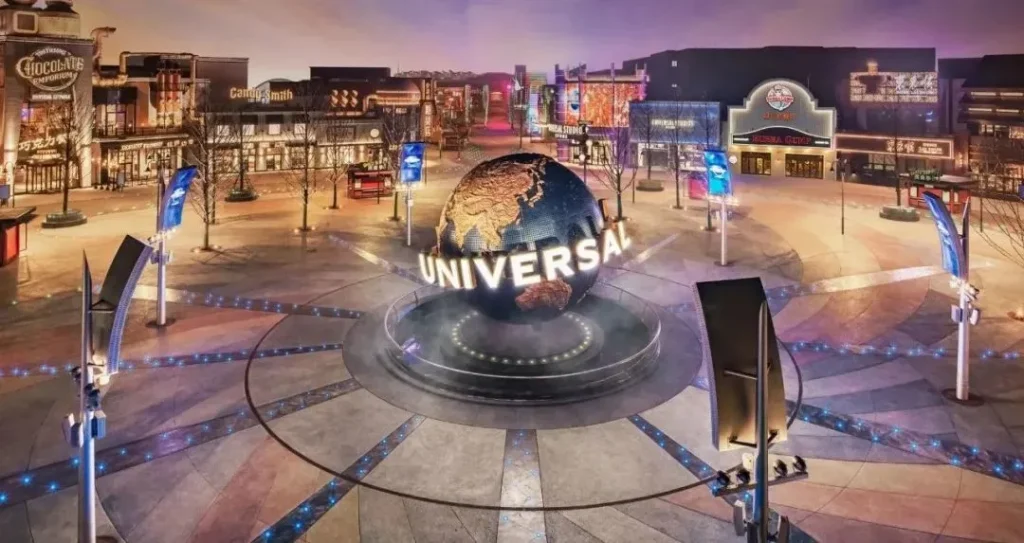When you think of Beijing, iconic landmarks like the Forbidden City and the Great Wall might come to mind. However, nestled within this bustling metropolis are the city’s true heartbeats—the hutongs (胡同). These narrow alleys and traditional courtyard residences offer a glimpse into Beijing’s rich history and vibrant culture. Wandering through a hutong is like stepping back in time, where every corner holds a story and every courtyard echoes the lives of generations past. Whether you’re a history enthusiast, a culture seeker, or simply looking to experience authentic Beijing life, exploring the hutongs is a must-do activity that showcases the essence of Beijing Chinese food and Chinese street food culture.
1. The Essence of Hutong Culture

Hutong culture is a distinctive facet of Beijing, embodying the city’s unique social fabric and architectural heritage. Anthropologist Taylor defines culture as a complex system encompassing knowledge, beliefs, arts, morals, laws, customs, and other capabilities acquired by individuals as members of society. Similarly, hutong culture reflects the everyday lives, traditions, and social interactions of Beijing residents.
Wang Zengqi, a renowned Chinese writer, described hutong culture as an “enclosed culture.” Residents of hutongs often exhibit a deep sense of attachment to their neighborhoods, with many living in the same hutong for decades, sometimes even their entire lives. Despite the aging infrastructure and occasional structural issues—like the sounds of houses creaking during heavy rains—locals cherish their homes with the belief that “a broken home is worth a fortune” (破家值万贯). This mindset highlights the intrinsic value Beijing people place on their living spaces and community ties.

Beijing residents are known for their contentment with simple pleasures. A warm bowl of zhu tou (窝头), pickled radishes, or a few drops of sesame oil on stinky tofu can bring immense satisfaction. As an elderly resident once remarked, “Nothing compares to Beijing. The stewed cabbage here tastes better than anywhere else—Beijing truly has the magic touch.” This satisfaction with modest living has become an integral part of daily life in the hutongs.

Moreover, Beijing’s hutong culture emphasizes harmony and tolerance among neighbors. While residents enjoy social gatherings and community events, they also maintain a respectful distance, embodying the spirit of “忍” (ren)—patience and endurance. This cultural trait is vividly portrayed in Lao She’s play Teahouse (茶馆), where the character Wang Lifa states, “I’ve been a compliant citizen all my life,” reflecting the collective mindset of many Beijing residents.
2. The Symbiotic Relationship Between Hutongs and Siheyuan

Hutongs and siheyuan (四合院)—traditional courtyard residences—are intrinsically linked, shaping the physical and social landscape of Beijing. Siheyuan typically consist of four buildings arranged around a central courtyard, symbolizing harmony and unity. These courtyards foster close-knit communities, where families live, socialize, and interact with their neighbors.
The layout of siheyuan significantly influences the structure of hutongs. Most hutongs in Beijing are laid out in a grid-like pattern, with siheyuan lining these alleys in a symmetrical fashion. This arrangement not only facilitates easy navigation but also reinforces the communal lifestyle that hutong culture promotes. The orientation of siheyuan—whether facing north, south, east, or west—determines the direction and ambiance of the surrounding hutong, contributing to the unique character of each alley.

Despite the shift towards modern high-rise apartments, the spirit of hutong and siheyuan culture persists. Even those who have moved into spacious apartments or private villas often retain elements of hutong culture, such as maintaining strong community ties and preserving traditional customs. This enduring legacy ensures that hutongs remain a vital part of Beijing’s cultural identity, bridging the past with the present.
3. Stories from Iconic Hutongs
1 Brick Pagoda Hutong (砖塔胡同)

Located in Xicheng District, Brick Pagoda Hutong is often referred to as a “living fossil” of Beijing’s hutong culture. Stretching 805 meters from Xisi South Street to Taipingqiao Street, the eastern 312 meters of the hutong remain remarkably well-preserved. Dating back to the Yuan Dynasty, Brick Pagoda Hutong derives its name from the Wansong Lao Ren Tower (万松老人塔), built in honor of the esteemed monk Wansong Lao Ren, a respected teacher of the famed statesman Yelü Chucai.

During the Yuan Dynasty, Brick Pagoda Hutong was a bustling entertainment hub, home to numerous guklan (勾栏)—traditional performance venues. It is considered one of the birthplaces of Chinese opera, with playwright Guan Hanqing possibly drawing inspiration from the lively performances held here. In the 20th century, literary giants like Lu Xun and Zhang Henshui resided in Brick Pagoda Hutong, contributing to its rich cultural tapestry.
Today, Brick Pagoda Hutong stands as a testament to Beijing’s enduring history, where old-world charm meets modern-day resilience. Visitors can explore historical sites, enjoy local snacks, and immerse themselves in the stories that have shaped this iconic alley.
2 Dongjiaomin Alley (东交民巷)

Dongjiaomin Alley is one of Beijing’s most historically significant hutongs, located in Dongcheng District. Originally known as Jiangmi Alley (江米巷) during the Yuan Dynasty, it became a prominent area during the Ming and Qing Dynasties as the site of various governmental offices, including the Ministries of Personnel, Rites, Revenue, War, and the Imperial Hospital.
In the late 19th century, following the Second Opium War, Dongjiaomin Alley was designated as the diplomatic district, attracting foreign embassies and consulates. This led to the construction of numerous Western-style buildings, including the Beijing Post Office (北京邮政管理局大楼) and the Mainland Bank (大陆银行) office, showcasing architectural styles ranging from Romanesque to Gothic.

Today, Dongjiaomin Alley retains much of its historical architecture, serving as a quiet yet culturally rich area. Landmarks like the China Court Museum (中国法院博物馆) and the French Post Office Old Building (法国邮政旧址) offer visitors a glimpse into the area’s storied past, blending Chinese and Western influences seamlessly.
3 Nanluoguxiang (南锣鼓巷)

Nanluoguxiang (南锣鼓巷), or South Gong & Drum Alley, is one of Beijing’s most popular and vibrant hutongs. Located in Dongcheng District, this alley spans 787 meters and has been around for over 740 years. As one of the oldest blocks in Beijing, Nanluoguxiang is renowned for its well-preserved siheyuan (四合院) and its rich blend of traditional and modern influences.

Once a residential area for nobles and officials, Nanluoguxiang has transformed into a trendy hotspot filled with cafes, boutiques, and art galleries. The narrow, winding streets are lined with a mix of old brick buildings and contemporary shops, making it a favorite among both locals and tourists. The area is also home to various cultural activities and events, providing a lively atmosphere that captures the essence of Chinese street food and Beijing Chinese food culture.
4 Yandaixie Street (烟袋斜街)

Yandaixie Street (烟袋斜街), also known as Yandai Byway, is the oldest slanting street in Beijing, stretching 232 meters. Its name originates from the prevalence of stores selling long-stemmed Chinese pipes and hookahs during the late Qing Dynasty to the 1930s. Today, Yandaixie Street stands as a testament to Beijing’s cultural and artistic heritage, offering a unique blend of traditional and Western influences.

Visitors can explore antique shops, art studios, and quaint cafes along the street, each offering a glimpse into the past while embracing modern trends. The street’s historical significance is further highlighted by the presence of remnants from cultural celebrities and ancient constructions, making it a must-visit destination for those looking to delve deeper into Beijing’s hutong culture.
5 Brick Pagoda Hutong (恭俭胡同)

Gongjian Hutong (恭俭胡同) is located in the eastern part of Xicheng District and spans approximately 600 meters from Di’anmen West Street to Jingshan Back Street. Once the site of the Ming Dynasty’s Neiguan Jian (内官监)—one of the twenty-four imperial departments responsible for various state affairs—Gongjian Hutong has a rich historical background. The famous explorer Zheng He (郑和), known for his seven voyages to the Western Oceans, served as an official here, leaving a lasting legacy.
Today, Gongjian Hutong houses several historical relics, including preserved ice cellars from the Ming and Qing Dynasties and the remnants of ancient temples like the Sanhua Temple (三官庙) and the Great Horse Guan Deities Temple (大马关帝庙). In 2017, the discovery of the Xibanchiao Bridge (西板桥)—a single-arch stone bridge—added another layer to the hutong’s historical significance, providing insights into Beijing’s ancient waterway systems.

Gongjian Hutong has also embraced modernity by converting some of its historical structures into themed restaurants and cultural venues, allowing visitors to experience both the old and the new aspects of Beijing’s hutong life.
4. The Evolution of Hutongs in Urban Development
1 Changes in Hutong Numbers and Names

Beijing’s hutongs have undergone significant transformations over the centuries. During the Yuan Dynasty, the city was home to just 29 hutongs as documented in historical records like Xijinzhi (析津志). By the Ming Dynasty, the number had surged to 1,170, reflecting the city’s rapid expansion and population growth. The Qing Dynasty saw this number climb to 2,077, and by the Republic of China era, Beijing boasted 3,216 hutongs.

However, modern urbanization and redevelopment projects have drastically reduced this number to just over 1,000. Many hutongs have been demolished to make way for high-rise buildings and infrastructure, leading to a loss of historical and cultural heritage.

Hutong names often carry deep historical and cultural meanings. While some names like Brick Pagoda Hutong (砖塔胡同) have remained unchanged since the Yuan Dynasty, others have evolved over time. For instance, Dongjiaomin Alley was once called “Shenjian Alley” (神仙胡同) during the Qing Dynasty before adopting its current name. During the Cultural Revolution, some hutongs were forcibly renamed with politically charged names like “Red Sentry Hutong” (红哨兵胡同), though these changes were mostly short-lived.
Preserving the original names and stories behind each hutong is crucial for maintaining Beijing’s cultural identity. Efforts to protect and restore hutongs have gained momentum, recognizing their importance as living museums that offer insights into the city’s historical and social evolution.
2 Phases of Hutong Transformation

Before the founding of the People’s Republic of China in 1949, Beijing’s hutongs were vibrant centers of daily life but faced numerous challenges, including poor infrastructure and overcrowded living conditions. Post-1949, the government initiated extensive renovations, paving the muddy hutong roads with asphalt and improving overall living conditions. By the early 1950s, over 1,000 hutongs had been upgraded, enhancing accessibility and cleanliness.

In the 21st century, Beijing has designated over twenty hutongs as historical and cultural preservation zones. Areas like Nanluoguxiang (南锣鼓巷) and Xisi Beiyi Street (西四北一条) have been meticulously restored, maintaining their traditional architecture while accommodating contemporary businesses like cafes, boutiques, and galleries. These revitalized hutongs now serve as cultural hubs, attracting both locals and tourists eager to experience Beijing’s timeless charm.
5. The Significance of Hutongs in Modern Beijing
1 Cultural Heritage and Preservation
Hutongs are more than just physical spaces; they are repositories of Beijing’s cultural heritage. Each hutong tells a story of the city’s past, from imperial dynasties to modern-day transformations. Preserving these alleys ensures that future generations can connect with their history and understand the evolution of Beijing’s society and culture.

Efforts to preserve hutongs involve restoring traditional buildings, maintaining architectural integrity, and promoting cultural activities. Initiatives like Hutong Cultural Festivals and the conversion of siheyuan into hutong bed and breakfasts (胡同民宿) allow visitors to experience traditional lifestyles while supporting local communities. These efforts not only protect the architectural beauty of hutongs but also keep the cultural practices and communal spirit alive.

Preserving hutong culture also plays a crucial role in retaining the city’s identity amidst rapid modernization. As Beijing continues to grow, maintaining its unique cultural landmarks like hutongs helps balance progress with tradition, ensuring that the city’s heritage is not lost to the tides of change.
2 Shaping Urban Function and Aesthetic
Hutongs significantly influence Beijing’s urban functionality and aesthetic. Traditionally, hutongs served as essential pathways connecting siheyuan, facilitating daily movement and fostering community interactions. In modern times, while some hutongs struggle to accommodate the influx of vehicles, others have been adapted to support urban micro-circulation through policies like “one-way streets” and designated parking areas.

Architecturally, hutongs contribute to Beijing’s distinctive skyline, offering a stark contrast to the surrounding high-rise buildings. The traditional gray brick walls and tiled roofs of siheyuan blend seamlessly with modern developments, creating a harmonious urban landscape that reflects Beijing’s layered history.

Moreover, hutongs enhance the city’s livability by providing green spaces and promoting pedestrian-friendly environments. The narrow alleys and intimate courtyards encourage walking and cycling, reducing reliance on motorized transportation and fostering a more sustainable urban lifestyle.
6. Activities and Experiences in Hutongs
Exploring Beijing’s hutongs offers a variety of activities that allow visitors to immerse themselves in the local culture and lifestyle.
1 Take a Rickshaw to Visit Hutongs

One of the most popular ways to explore hutongs is by taking a rickshaw ride. This traditional mode of transportation not only provides a unique perspective of the narrow alleys but also offers insightful commentary from experienced drivers who share stories about the area’s history and notable landmarks. Riding through hutongs like Shichahai (什刹海) and Bell & Drum Tower (钟鼓楼) allows visitors to appreciate the architectural beauty and cultural significance of these ancient alleys.
2 Make Dumplings in a Local Family

For a more hands-on experience, visitors can participate in dumpling-making sessions hosted by local families in hutongs. This activity provides an intimate glimpse into Beijing’s culinary traditions and fosters cultural exchange. Making dumplings together not only teaches the art of this beloved Chinese dish but also highlights the importance of family and community in hutong culture.
3 Bike Along Beijing Hutongs

Renting a bicycle is another excellent way to explore hutongs, offering the freedom to navigate at your own pace. Cycling through serene alleys, admiring the intricate details of siheyuan, and stopping at quaint cafes or traditional shops make for a memorable and active way to experience hutong life. Areas like Yandaixie Street (烟袋斜街) and Mao’er Hutong (帽儿胡同) are particularly bike-friendly, with well-maintained paths and scenic views.
4 Visit Hutong Museums and Cultural Centers

Several hutongs house museums and cultural centers that preserve and showcase Beijing’s rich heritage. For example, the Hutong Museum in Shichahai offers exhibits on the history, architecture, and daily life of hutong residents. Interactive displays, historical artifacts, and guided tours provide comprehensive insights into the evolution of these traditional alleys.
5 Explore Local Handicrafts and Artisans

Beijing’s hutongs are home to numerous artisans and craftsmen who specialize in traditional Chinese arts such as paper cutting, calligraphy, and knot making. Visitors can watch live demonstrations, purchase unique handmade items, and even try their hand at these crafts. Exploring shops along Liulichang Cultural Street (琉璃厂文化街) or Yandaixie Street (烟袋斜街) reveals the artistic talents that thrive within hutong communities.

Beijing’s hutongs are the living soul of the city, embodying its rich history, cultural diversity, and enduring spirit. As urbanization continues to shape Beijing’s landscape, the preservation and revitalization of hutongs become increasingly important. These alleys not only offer a window into the past but also provide a vibrant, communal space where traditional and modern elements coexist harmoniously. Whether you’re strolling through the art-filled corridors of Wudaoying Hutong (五道营胡同) or savoring street food in Niujie (牛街), Beijing’s hutongs promise an unforgettable journey into the heart of China’s capital, where every corner holds a delicious story of Chinese food and snacks waiting to be discovered.
